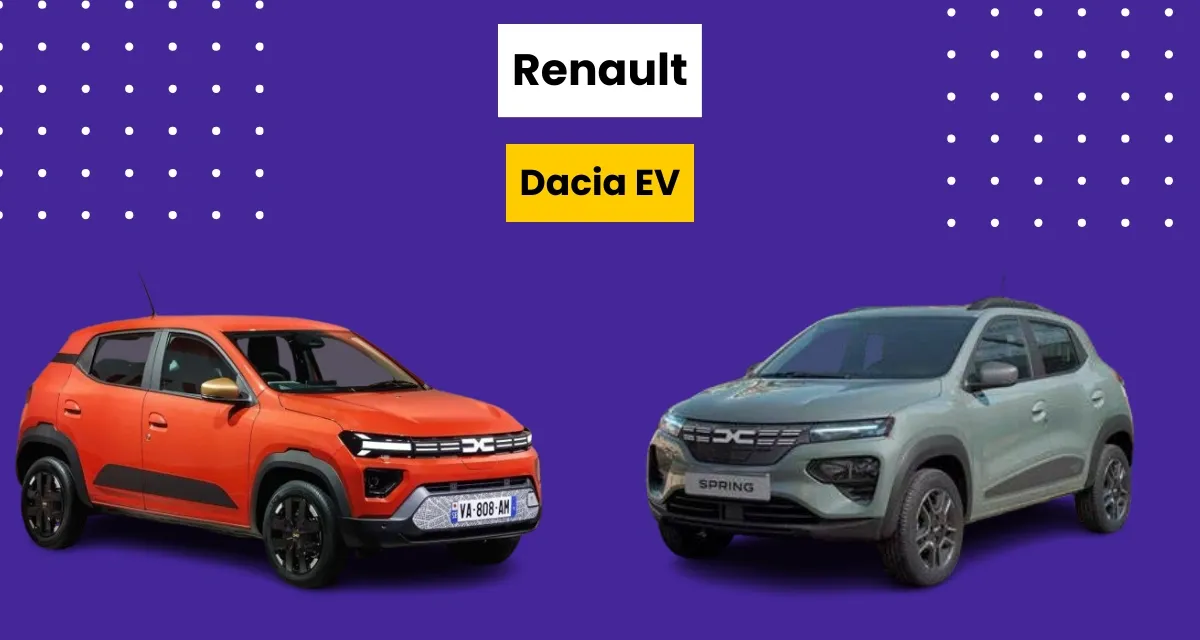

Dacia, a sister brand of Renault, unveiled the 2024 Spring EV. This is the second generation Spring EV, which is based on the Renault Kwid EV. It features a completely new interior with a notable improvement in equipment. The design has also been completely redesigned. Because the Dacia Spring is an electric Renault Kwid with some exterior and interior styling changes, the latest model also serves as a sneak peek at the upcoming entry-level hatchback that will be available in India. Renault is anticipated to introduce the new-generation Kwid, also known as the 2024 Spring EV, to India in 2025.
Although the updated Spring EV appears to be a completely new model, it is merely a significantly improved version of the model that debuted in 2021. Setting the standard for the most economical EVs in their respective classes, the Spring and its sister vehicle, the Renault K-ZE, went on sale concurrently in China and a few other nations.
The all-new Dacia Duster and the new Spring EV are essentially similar. The new Dacia logo now takes center stage in the sleek, horizontal LED daytime running lamps up front, which blend in perfectly with the gloss black grille with off-white inserts. The bumper below houses the primary headlamps. There is a special insert in the grille for the charging port.
The Spring EV now has an even more aggressive look thanks to the wider centre air dam and new headlamps. The Spring EV, which is offered in India, is largely based on the Kwid's profile. The doors, fenders, and even the conventional pull-style door handles still seem to be from the earlier model.
The rear bumper receives minor design adjustments, and although the taillamps remain unchanged, they are equipped with new Y-shaped LED lighting elements akin to those found on the Duster. These elements are connected by a gloss black plastic panel located on the tailgate. Additionally, a special mesh panel finished in a contrasting color is added to the front and rear bumpers.
Inside, the Spring EV receives a completely redesigned dashboard that is unmistakably influenced by the Duster. It has a rugged appeal despite being modern. The integrated controls on the new steering wheel, the infotainment screen, and the panel below with the updated HVAC controls all look like they were taken from the Duster. Numerous physical buttons and controls are present, which is always handy.
The Spring EV shares features with the Duster, including unique accessory mounts on the dashboard and center console and an open shelf on the passenger side. Advanced emergency braking, lane-keeping assistance, and a driver attention monitoring system are among the advanced driver assistance features available for the Spring EV.
In the event that drivers want to turn off the ADAS, a physical "My Safety" button offers instant access to the settings. This is done to ensure compliance with Europe's new GSR2 safety regulations. Additionally, ABS and dual airbags are standard. Higher-end models come with a 10.1-inch wirelessly updateable infotainment screen and a storage recess on the passenger side of the dashboard.
The Spring EV boasts a 10-inch touchscreen with wireless smartphone connectivity, a 7-inch digital driver's display, manual air conditioning, all four power windows, and connected car technology. The vehicle-to-load (V2L) capability of the EV enables it to be used as a source of energy for other electrical devices.
The safety net of the electric hatchback is equipped with multiple advanced driver assistance systems (ADAS), such as lane keep assist, traffic sign recognition, autonomous emergency braking (AEB), and driver attentiveness alert. It also packs rear parking sensors.
With a 26.8 kWh battery pack, the Dacia Spring EV is claimed to have a range of more than 220 kilometers by WLTP. Depending on the version chosen, it comes with a choice of two electric motors: 46 PS and 66 PS. The 7 kW AC charger that comes standard with the new Dacia Spring EV can charge the battery from 20 to 100 percent on a 15A plug point in less than 11 hours, or from a 7 kW wallbox unit in just 4 hours. Fast charging from 20 to 80 percent in 45 minutes is possible with a 30 kW DC charger.
Priced from Rs 5 lakh (ex-showroom), the new generation Renault Kwid, which is based on the new Dacia Spring EV, may be available. The exact date of its launch in India is still unknown, though. The Dacia Spring EV will directly compete with vehicles like the Tata Tiago EV and the MG Comet if it is introduced to the Indian market as the Renault Kwid EV.